NCERT Solutions Class 11 Biology Chapter 2 - Biological Classification
Q1: Discuss how classification systems have undergone several changes over a period of time.
Ans: Early classification systems were based primarily on observable characteristics such as morphological features, anatomy, and external appearances. However, with the advent of modern scientific tools and techniques, such as DNA sequencing and molecular analysis, our understanding of the relationships among organisms has significantly improved. This has led to revisions and refinements in classification systems.
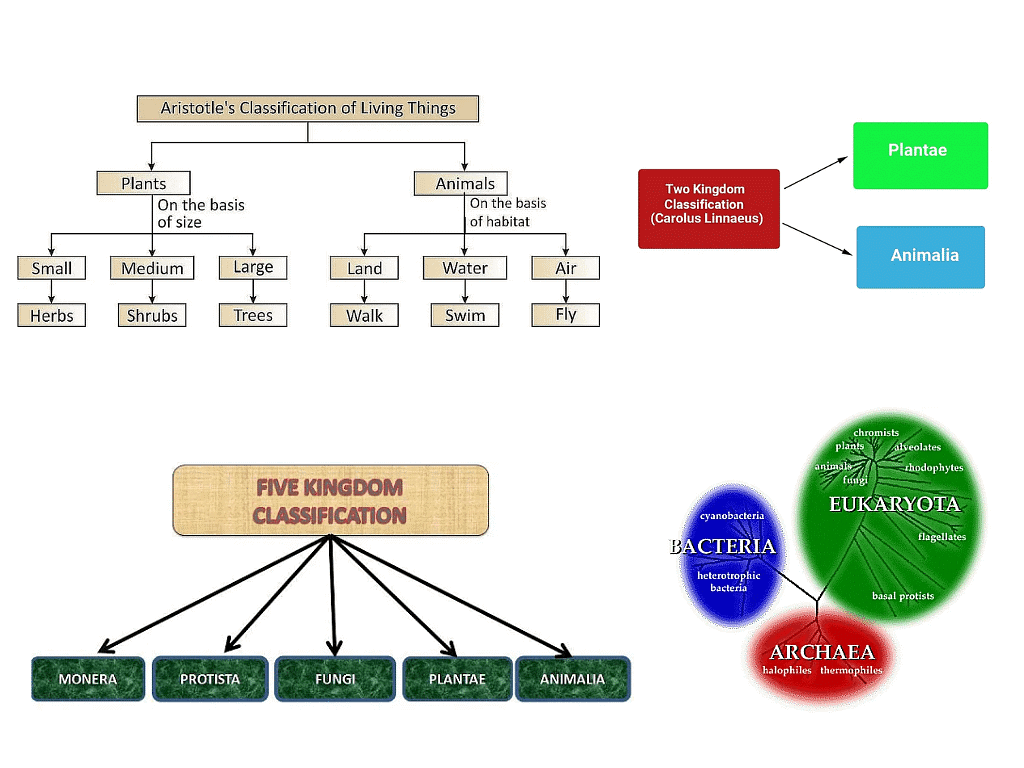 Different Classification Systems over a period of time
Different Classification Systems over a period of time
- Aristotle's classification system for plants and animals failed to classify all known organisms.
- Linnaeus later proposed a two-kingdom system, but it could not differentiate between unicellular and multicellular organisms or eukaryotes and prokaryotes.
- Carl Woese proposed the more modern three-domain system based on genetic and molecular evidence.
- To address these issues, R.H. Whittaker proposed a five-kingdom system based on characteristics such as cell structure and mode of nutrition, consisting of Monera, Protista, Fungi, Plantae, and Animalia.
Q2: State two economically important uses of:
(a) Heterotrophic bacteria
(b) Archaebacteria
Ans:
(a) Heterotrophic bacteria
- They act as decomposers and help in the formation of humus.
- They help in the production of curd from milk.
- Many antibiotics are obtained from some species of bacteria.
- Many soil bacteria help in the fixation of atmospheric nitrogen.
(b) Archaebacteria
- Methane gas is produced from the dung of ruminants by methanogens.
- Methanogens are also involved in the formation of biogas and sewage treatment.
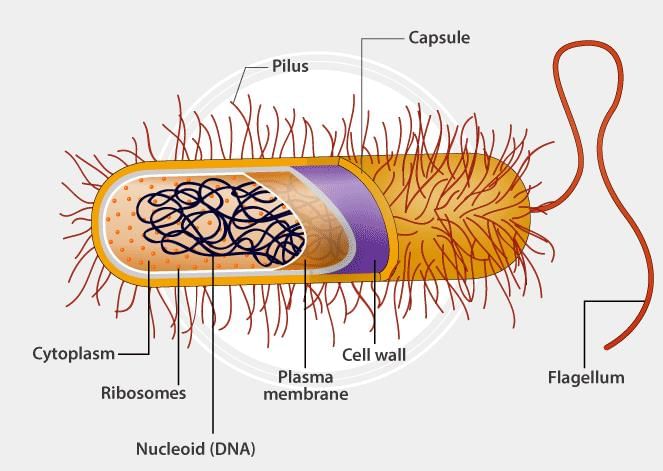 Archaebacteria
Archaebacteria
Q3: What is the nature of cell walls in Diatoms?
Ans: In diatoms, the cell walls form two thin overlapping shells, which fit together as in a soap box. The walls are embedded with silica, and thus, the walls are indestructible. Thus, diatoms have left behind a large amount of cell wall deposits in their habitat; this accumulation over billions of years is referred to as ‘diatomaceous earth’.
Q4: Find out what the terms ‘Algal bloom’ and ‘Red-tides’ signify.
Ans:
- An algal bloom refers to an increase in the population of algae or blue-green algae in the water, resulting in the discolouration of the water body. This causes an increase in the biological oxygen demand (BOD), resulting in the death of fish and other aquatic animals.
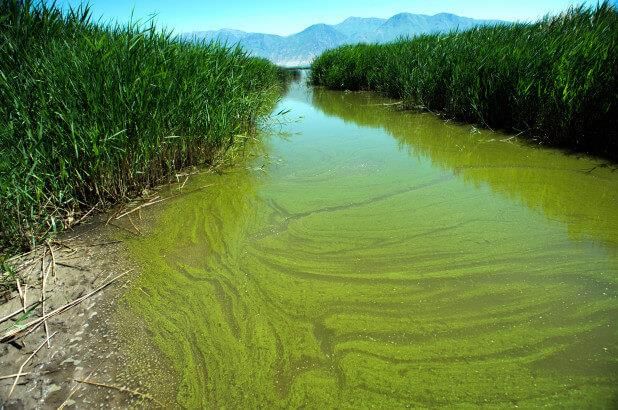 Algal Bloom
Algal Bloom - Red tides are caused by red dinoflagellates (Gonyaulax) that multiply rapidly. Due to their large numbers, the sea appears red in colour. They release large amounts of toxins into the water that can cause the death of a large number of fish.
 Red Tide
Red Tide
Q5: How are Viroids different from Viruses?
Ans: Viroids were discovered in 1917 by T.O. Denier. They cause potato spindle tuber disease. They are smaller in size than viruses. 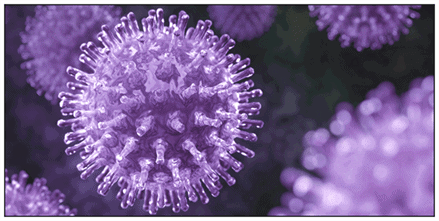 ViroidsViroids are different from viruses in the following ways:
ViroidsViroids are different from viruses in the following ways:
Viroids: small, naked, circular RNA molecules without a protein coat
- Reproduction: relies on the host plant's cellular machinery for replication, replicates in the nucleus using the host's RNA polymerase enzyme.
- Host Range: infects plants only, does not infect animals or humans.
- Disease Symptoms: cause plant diseases, such as stunting, deformations, and changes in pigmentation.
- Treatment: no antiviral drugs available; management involves preventive measures like removing infected plants.
- Evolution: relics of the RNA world, believed to be the early stage of life on Earth.
Viruses: larger and more complex, have genetic material enclosed in a protein coat called a capsid
- Reproduction: Obligate intracellular parasites require a host cell to replicate and use the host cell's machinery to produce new virus particles
- Host Range: can infect a wide range of hosts, including animals, plants, fungi, and bacteria
- Disease Symptoms: can cause a wide range of diseases, including common cold, flu, HIV/AIDS, Ebola, and COVID-19
- Treatment: Some viral infections can be treated with antiviral drugs, managed through supportive care and prevented through vaccination
- Evolution: originated from various genetic elements that acquired the ability to infect cells and reproduce.
Q6: Describe briefly the four major groups of Protozoa.
Ans: Protozoa are microscopic unicellular protists with a heterotrophic mode of nutrition.
These are divided into four major groups:

(i) Amoeboid Protozoa or Sarcodines
- They are unicellular, jelly-like protozoa found in fresh or seawater and in moist soil.
- Their body lacks a periplast. Therefore, they may be naked or covered by a calcareous shell.
- They usually lack flagella and have temporary protoplasmic outgrowths called pseudopodia.
- These pseudopodia, or false feet, help in movement and capturing prey.
- They include free-living forms, such as Amoeba or parasitic forms, such as Entamoeba.
(ii) Flagellated Protozoa or Zooflagellates
- They are free-living, non-photosynthetic flagellates without a cell wall.
- They possess flagella for locomotion and capturing prey.
- They include parasitic forms such as Trypanosoma, which causes sleeping sickness in human beings.
(iii) Ciliated Protozoa or Ciliates
- They are aquatic individuals that form a large group of protozoa.
- Their characteristic features are the presence of numerous cilia on the entire body surface and the presence of two types of nuclei.
- All the cilia beat in the same direction to move the water-laden food inside a cavity called the gullet.
- They include organisms such as Paramecium, Vorticella etc.
(iv) Sporozoans
- They include disease-causing endoparasites and other pathogens.
- They are uninucleate and their body is covered by a pellicle.
- They do not possess cilia or flagella.
- They include the malaria-causing parasite Plasmodium.
Q7: Plants are Autotrophic. Can you think of some plants that are partially Heterotrophic?
Ans: Plants are autotrophic because they contain chlorophyll and can synthesise their own food through photosynthesis. However, some plants are partially heterotrophic. Examples include insectivorous plants like Bladderwort and Venus flytrap, which trap and digest insects to supplement their nutrition, and Cuscuta, a parasitic plant that derives nutrients from its host plant.
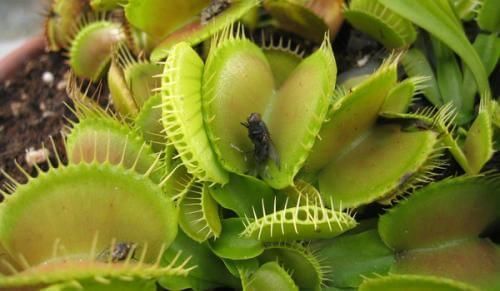 Pitcher Plant
Pitcher Plant
Q8: What do the terms Phycobiont and Mycobiont signify?
Ans:
- Lichens are formed by a symbiotic association between algae and fungi.
- Phycobiont refers to the algal component of the lichens, and mycobiont refers to the fungal component.
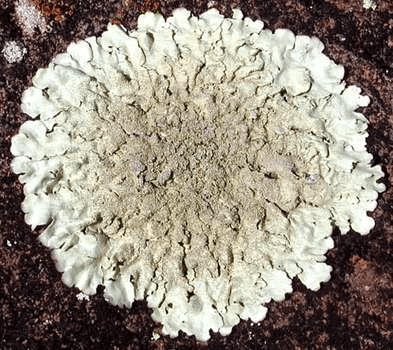 Lichen
Lichen - Algae contain chlorophyll and prepare food for fungi, whereas the fungus provides shelter to algae and absorb water and nutrients from the soil. This type of relationship is referred to as symbiotic.
Q9: Give a comparative account of the classes of Kingdom Fungi under the following:
(i) Mode of Nutrition
(ii) Mode of Reproduction
Ans:
(a) Phycomycetes: This group of fungi includes members such as Rhizopus, Albugo, etc.
- Mode of nutrition: They are obligate parasites on plants or are found on decaying matter such as wood.
- Mode of reproduction:
- Asexual reproduction occurs through motile zoospores or non-motile aplanospores produced endogenously in the sporangium.
- Sexual reproduction may be of an isogamous, anisogamous, or oogamous type. It results in the formation of a thick-walled zygospore.
(b) Ascomycetes: This group of fungi includes members such as Penicillium, Aspergillus, Claviceps, and Neurospora.
- Mode of nutrition: They are saprophytic, decomposers, parasitic or coprophilous (growing on dung).
- Mode of reproduction:
- Asexual reproduction occurs through asexual spores produced exogenously, such as conidia produced on conidiophores.
- Sexual reproduction takes place through ascospores produced endogenously in sac-like asci and arranged inside ascocarps.
(c) Basidiomycetes: This group of fungi includes members such as Ustilago, Agaricus and Puccinia.
- Mode of nutrition: They grow as decomposers in soil or on logs and tree stumps. They also occur as parasites in plants causing diseases such as rusts and smuts.
- Mode of reproduction:
- Asexual reproduction takes place commonly through fragmentation. Asexual spores are absent.
- Sex organs are absent, but sexual reproduction takes place through plasmogamy. It involves the fusion of two different strains of hyphae. The resulting dikaryon gives rise to a basidium. Four basidiospores are produced inside a basidium.
(d) Deuteromycetes: This group of fungi includes members such as Alternaria, Trichoderma, and Colletotrichum.
- Mode of nutrition: Some members are saprophytes, while others are parasites. However, a large number act as decomposers of leaf litter.
- Mode of reproduction:
- Asexual reproduction is the only way of reproduction in Deuteromycetes. It occurs through asexual spores called conidia.
- Sexual reproduction is absent in Deuteromycetes.
Q10: What are the characteristic features of Euglenoids?
Ans:
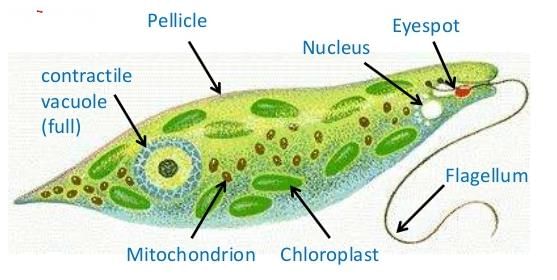 EuglenoidSome characteristic features of Euglenoids are as follows:
EuglenoidSome characteristic features of Euglenoids are as follows:
- Euglenoids: unicellular organisms with an elongated or spindle-shaped body
- Flagella: possess one or two long whip-like flagella that enable them to move through water
- Chloroplasts: contain chloroplasts responsible for photosynthesis
- Eyespot: have a light-sensitive pigmented spot that allows them to detect light and move towards it
- Pellicle: has a flexible, proteinaceous layer that provides structural support to the cell
- Reproduction: reproduces asexually by binary fission and sexually through conjugation
- Habitat: mostly found in freshwater habitats, but can also thrive in soil or marine environments.
Q11: Give a brief account of viruses with respect to their structure and the nature of their genetic material. Also, name four common viral diseases.
Ans:
- Viruses are sub-microscopic infectious agents that can infect all living organisms.
- A virus consists of genetic material surrounded by a protein coat. The genetic material may be present in the form of DNA or RNA.
- Most of the viruses that infect plants have single-stranded RNA as genetic material.
- On the other hand, the viruses infecting animals have single or double-stranded RNA or double-stranded DNA.
- Bacteriophages or viruses infecting bacteria mostly have double-stranded DNA. Their protein coat, called capsid, is made up of capsomere subunits.
- These capsomeres are arranged in helical or polyhedral geometric forms.
- AIDS, smallpox, mumps, and influenza are some common examples of viral diseases.
Q12: Organise a discussion in your class on the topic – Are viruses living or nonliving?
Ans:
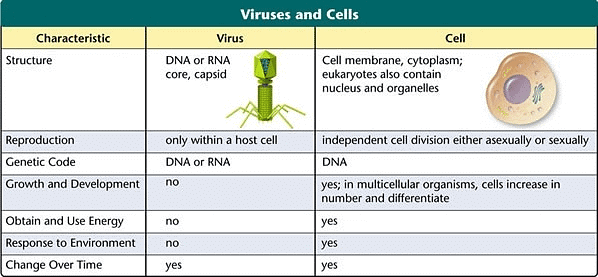
Characteristics of Living Organisms: These may include traits such as cellular organization, ability to grow and reproduce, metabolism, and response to stimuli.
Viral Structure and Reproduction: Viruses are composed of genetic material (DNA or RNA) surrounded by a protein coat, but they are not made up of cells and do not have the organelles necessary for independent metabolic processes. Viruses also require a host cell to reproduce, as they cannot carry out cellular functions on their own. This raises questions about their status as living organisms.
Viruses as Parasites: Viruses are considered obligate intracellular parasites, as they rely on a host cell to reproduce and cannot reproduce outside of a living host. Comparing this with the characteristics of living organisms, which are typically considered to be capable of independent reproduction.
Debates in the Scientific Community: Whether viruses are living or non-living is a subject of ongoing debate among scientists. Some scientists consider viruses as living organisms because they can evolve, mutate, and reproduce, albeit with the help of a host cell. Others argue that viruses lack essential characteristics of living organisms and are therefore considered non-living.
|
169 videos|524 docs|136 tests
|
FAQs on NCERT Solutions Class 11 Biology Chapter 2 - Biological Classification
| 1. What are the different levels of classification in biological classification? |  |
| 2. What is the importance of biological classification in the field of science? |  |
| 3. How do scientists determine the classification of a new species? |  |
| 4. What is the significance of binomial nomenclature in biological classification? |  |
| 5. How has the classification system evolved over time in the field of biology? |  |






















